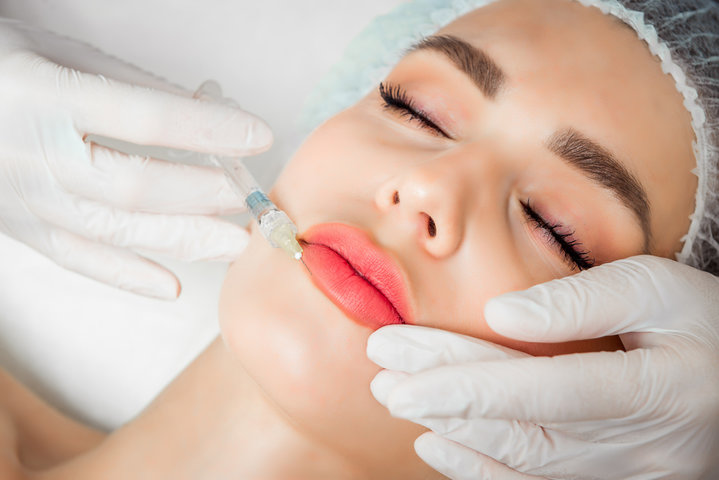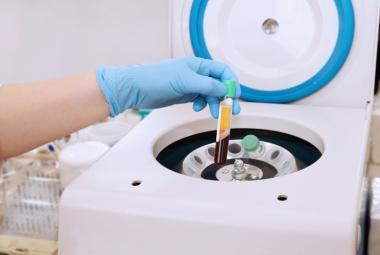Thinking about getting dermal fillers while breastfeeding? You’re not alone. Whether you're smoothing wrinkles, restoring facial volume, or just looking for a refresh, many parents are curious about cosmetic injectables—but also want to be sure they're safe for their baby.
Here’s what you need to know about how fillers work, which ones are safest, and what to expect during and after treatment.
What Are Cosmetic Fillers?
Cosmetic (or dermal) fillers are injectable substances used to:
- Smooth out wrinkles and fine lines
- Restore volume in areas like the cheeks or under-eyes
- Plump lips or reshape facial features
- Improve the appearance of scars or skin texture
They’re injected just under the skin and stay in place to create a smoother, more youthful look. The specific filler selected depends on the treatment area, desired duration of results, and individual anatomy and goals. Each type of filler has distinct properties, uses, and safety considerations (Alam, 2018).
Are Fillers Safe While Breastfeeding?
A substance must first enter the bloodstream for it to enter breast milk. Dermal fillers are injected locally and stay in the tissue where they are placed. When administered properly, fillers are not absorbed into the bloodstream, so they do not transfer into breast milk (Alam, 2021).
The short story: You don’t need to delay breastfeeding after getting fillers. You can continue nursing as usual right after your appointment. For information on individual fillers, keep reading.
Most Common Fillers (and what we know about them)
1. Hyaluronic Acid (HA) Fillers
Brands: Juvederm, Restylane, Belotero, Evolysse
Uses: Fine lines, lip enhancement, under-eye hollows, and scars
Material: HA is a naturally occurring sugar (polysaccharide) that attracts and retains moisture.
Breastfeeding Safety: HA fillers stay in the injection site and are slowly broken down by enzymes like hyaluronidase and cleared through natural processes. They do not enter the bloodstream or breast milk (Becker, 2009). Evolysse does contain a small amount of lidocaine with the HA to help with pain, bruising, and swelling; however, the amount of lidocaine is not enough to warrant a specific wait time after injection.
Side Effects:
- Common: swelling, bruising, redness, tenderness
- Rare: vascular occlusion (blocked blood vessel), tissue death, chronic inflammation, vision issues—most of these can be reversed with hyaluronidase injections (see “What If You Want to Dissolve Filler?” for more details).
2. Calcium Hydroxylapatite (CaHA) Fillers
Brand: Radiesse
Uses: Deeper wrinkles, volume loss in cheeks/jawline, hand rejuvenation
Material: A synthetic version of a mineral found in bone, suspended in gel
Breastfeeding Safety: CaHA stays where it’s injected, acting as a scaffold to build collagen. It slowly breaks down into calcium and phosphate ions—minerals your body knows how to handle in the breast milk (Pavicic, 2013).
Side Effects:
- Similar to HA fillers
- Slightly higher risk of nodules or delayed granulomas (inflammation)
3. Poly-L-lactic Acid (PLLA) Fillers
Brand: Sculptra
Uses: Gradual volume restoration, lipoatrophy
Material: A biodegradable plastic that stimulates collagen production over time
Breastfeeding Safety: PLLA slowly breaks down into lactic acid, which is naturally metabolized and cleared. PLLA doesn’t circulate in the blood (so can’t transfer into milk) (Herrmann, 2018).
Side Effects:
- Delayed nodules or granulomas
- Requires multiple treatments with gradual results
Less Common Fillers: What You Should Know
Other fillers like polymethyl methacrylate (PMMA), collagen-based products, and polyacrylamide gel are used less frequently. While they also stay localized and haven’t shown systemic absorption, they can carry a higher risk of complications like lumps or chronic inflammation—especially the more permanent types. Temporary and reversible fillers like HA are generally the preferred choice for all patients, which is unchanged by breastfeeding status.
How the Procedure Works
Here’s what to expect if you’re getting a filler treatment:
- Prep: Your provider will clean the skin with an antiseptic—usually isopropyl alcohol or chlorhexidine. To minimize discomfort during the procedure, a topical numbing cream (usually lidocaine-based) is applied {Kouba, 2016).
- Injection: The injector selects the appropriate filler type and technique based on the treatment area and desired outcome. Fillers are injected with either a fine needle or a blunt-tipped cannula—cannulas are often chosen in higher-risk areas to reduce the chance of hitting a blood vessel. Fillers are injected slowly, with frequent aspiration and gentle massage to ensure safe and even placement (Alam, 2021).
- Aftercare: Avoid heavy exercise, heat, or touching the area for at least 24 hours. Some swelling, redness, or bruising is common. Patients are advised to watch for signs of serious complications, such as pain, blanching, or vision changes, and to seek immediate medical attention if these occur.
What If You Want to Dissolve Filler?
If a hyaluronic acid (HA) filler ever needs to be dissolved—whether due to overcorrection, misplaced filler, or a rare complication—an enzyme called hyaluronidase (brand name Hylenex) can safely and effectively break it down. Hylenex is the same protein as natural hyaluronidase made by your body, but produced by Chinese hamster ovary cells. It works quickly and is considered the standard treatment for managing these situations. Hyaluronidase is considered safe to use while breastfeeding because it acts locally at the injection site, any small amount that enters the bloodstream is rapidly broken down and doesn’t affect the milk. It doesn’t affect breast milk or stay in your system (Sharma, 2021).
What About Filler Getting into the Bloodstream?
This is a common concern—and an important one to understand. Fillers are meant to be injected into soft tissue, not blood vessels. But in rare cases, a filler can accidentally enter a blood vessel during injection. This is called an intravascular injection, and while it’s uncommon, it can cause serious complications like:
- Blocked blood flow
- Skin damage or tissue death
- Vision problems, or in extremely rare cases, blindness
That sounds scary—but it’s very rare (estimated <1 in 5,000 injections), especially when the procedure is done by a skilled injector who knows facial anatomy and uses techniques (like using a blunt-tipped cannula and injecting slowly) to reduce risk (Goodman, 2022).
And here’s some reassuring news for breastfeeding parents:
Even if a filler were to enter a blood vessel, it still doesn’t mean it gets into your breast milk. For something to affect milk, it needs to circulate through your bloodstream in significant amounts. Intravascular injection of dermal fillers don’t travel well, causing problems because they block the vessel.
Choosing The Right Provider Matters
The best way to ensure safety—for you and your baby—is to choose a qualified, experienced injector. Here’s what to look for:
- A board-certified dermatologist or plastic surgeon
- Experience with cannula technique (safer in high-risk areas)
- Someone who knows you’re breastfeeding and can guide you appropriately
- A reputable clinic—skip the med spa deals and unlicensed injectors (Look for MDs, NPs, or RNs who have been certified to inject the product you are considering)
Final Thoughts
If you’re breastfeeding and considering fillers, hyaluronic acid (HA) products are your safest, most studied option. They’re temporary, naturally derived, reversible, and don’t interfere with breastfeeding. With the right provider and proper technique, you can safely enjoy cosmetic treatments without compromising your baby’s health.
Nichole Campbell, MSN, APRN, NP-C
Katie Boatler, RN, BSN
Kaytlin Krutsch, PhD, PharmD, MBA, BCPS
References
Alam, M. and R. Tung (2018). "Injection technique in neurotoxins and fillers: Indications, products, and outcomes." J Am Acad Dermatol 79(3): 423-435.
Alam, M., R. Kakar, J. S. Dover, V. Harikumar, B. Y. Kang, H. T. Wan, E. Poon and D. H. Jones (2021). "Rates of Vascular Occlusion Associated With Using Needles vs Cannulas for Filler Injection." JAMA Dermatol 157(2): 174-180.
Becker, L. C., W. F. Bergfeld, D. V. Belsito, C. D. Klaassen, J. G. Marks, Jr., R. C. Shank, T. J. Slaga, P. W. Snyder, P. Cosmetic Ingredient Review Expert and F. A. Andersen (2009). "Final report of the safety assessment of hyaluronic acid, potassium hyaluronate, and sodium hyaluronate." Int J Toxicol 28(4 Suppl): 5-67.
Goodman, G. J., M. R. Magnusson, P. Callan, S. Roberts, S. Hart, F. Lin, E. Rahman, C. B. McDonald, S. Liew, C. Porter, N. Corduff and M. Clague (2022). "Aspiration Before Tissue Filler-An Exercise in Futility and Unsafe Practice." Aesthet Surg J 42(1): 89-101.
Herrmann, J. L., R. K. Hoffmann, C. E. Ward, J. M. Schulman and R. C. Grekin (2018). "Biochemistry, Physiology, and Tissue Interactions of Contemporary Biodegradable Injectable Dermal Fillers." Dermatol Surg 44 Suppl 1: S19-S31.
Pavicic, T. (2013). "Calcium hydroxylapatite filler: an overview of safety and tolerability." J Drugs Dermatol 12(9): 996-1002.
Sharma, D. S. C. and M. A. Lahiri (2021). "Use of hyaluronidase in plastic surgery: A review." J Plast Reconstr Aesthet Surg 74(7): 1610-1614.







